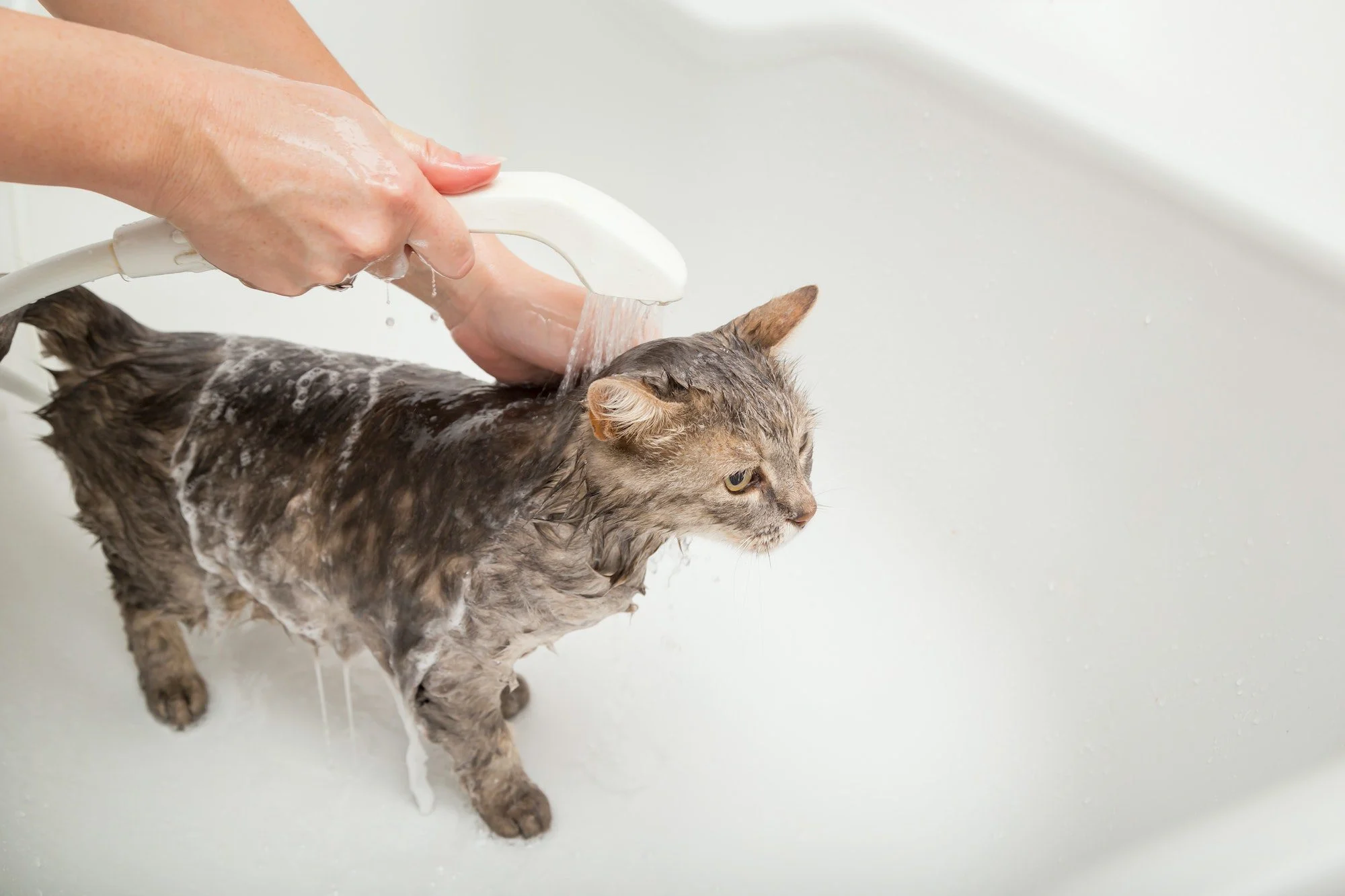Hello, pet friends! I’m Jordan Lee, a certified groomer with five years of experience, here to share my step-by-step tips for bathing your cat without the chaos. My home, filled with a golden retriever, spaniel, British short-hair, Persian cat, hamster, and African Grey parrot, is my testing ground, and my Persian cat’s bath time used to be a splashy challenge until I honed my technique.
At my salon, I help clients turn cat baths into a stress-free routine. Bathing supports your cat’s health, much like proper litter habits, as covered in an article on cat litter box tips. This guide walks you through why and how to bathe a cat, with practical steps, based on my hands-on work. I will link to newer articles like Symptoms and treatment of ear mites in dogs and trusted sources. Let’s make bath time a breeze!
Why bathe a cat?
Cats groom themselves, but baths are needed for the following:
- Skin health. Removes dirt or allergens. My British shorthair’s coat shines post-bath.
- Matted fur. Loosens tangles, especially in my Persian cat’s fluff.
- Flea control. Washes away pests. My spaniel’s flea baths inspired this step.
- Medical needs. Soothes skin conditions with vet-approved shampoos.
- Odor reduction. Freshens long-haired breeds like my Persian cat.
Baths complement brushing, unlike the focus in an article on the importance of grooming for your pet’s health.
Tools you will need
Gather these for a smooth bath:
- Cat-safe shampoo. Use vet-recommended products. I use a mild shampoo for my Persian cat.
- Non-slip mat. Prevents slips in the tub or sink. A rubber mat helps my British short-hair.
- Towels. Soft towels for drying. I keep two ready for my cats.
- Brush or brush. Removes loose fur pre-bath. My Persian cat needs a slicker brush.
- Cup or sprayer. For gentle rinsing. I use a cup for my British short-hair.
The ASPCA provides tips on safe pet grooming, including bath prep.
How to bathe a cat
Bathing a cat requires care to keep them calm. Here’s my step-by-step approach:
Prepare your cat
Brush to remove loose fur and mats. I brushed my Persian cat to avoid bath-time tangles. Trim nails to reduce scratches, as in an article on how to safely trim your dog’s nails. Place a non-slip mat in a sink or tub with a few inches of lukewarm water (about 100°F).
Introduce water slowly
Place your cat in the sink, speaking softly. I let my British short-hair stand while I wet her paws first. Use a cup to pour water over her body, avoiding the face. Stay calm—my Persian cat relaxes when I move slowly. For anxious cats, see my guide on how to introduce a new pet to your home.
Apply shampoo
Use a cat-safe shampoo, lathering gently. I massage my Persian cat’s coat, avoiding eyes and ears. Focus on dirty spots, like my British short-hair’s belly. An article on how to read cat food labels highlights safe ingredients, relevant for shampoo choices too.
Rinse thoroughly
Rinse with clean water, ensuring no soap residue remains. I rinse my British short-hair twice to be sure. Check ears and face with a damp cloth, as I do for my spaniel. Incomplete rinsing can irritate skin, similar to issues in an article on how to spot and prevent common skin issues in dogs.
Dry your cat
Wrap in a towel and pat dry. I swaddle my Persian cat to keep her warm. Use a low-heat dryer if tolerated, but my British short-hair prefers air-drying. Reward with treats, like I do for my golden retriever. For seniors, be gentle, as in an article on common senior dog behavior problems.
Tips for stress-free bathing
Here’s my salon advice:
- Start young. Kittens, like my British short-hair as a kit, adapt better.
- Stay calm. Your vibe soothes cats. I keep steady for my Persian cat.
- Short sessions. Limit baths to 10 minutes. My cats prefer quick dips.
- Check health. Baths support wellness, as in an article on best dog foods for your senior dogs.
- Monitor stress. Watch for panting, as in an article on smart collars in pet care.
Special considerations
- Long-haired cats. My Persian cat needs extra rinsing to avoid residue.
- Short-haired cats. My British short-hair baths are quicker but still thorough.
- Senior cats. Older cats need warmth, unlike my young hamster’s care.
- Skin conditions. My client’s cat needed medicated shampoo, per vet advice.
The American Kennel Club (AKC) offers guidance on bathing cats, with safety tips.
When to see a vet
If your cat resists baths excessively, has skin irritation, or shows fleas, consult a vet. My Persian cat’s scratching once needed vet input. For related care, see an article on telemedicine in veterinary care. Persistent issues may need diagnostics.
As a groomer, I’ve turned my Persian cat’s bath-time protests into cozy bonding moments, and my British short-hair now tolerates a quick dip. With patience, bathing strengthens your connection with your cat. Explore more pet care tips in articles like how to read cat food labels or my guide on symptoms and treatment of ear mites in dogs. If challenges arise, your vet or groomer is a call away. Here’s to clean, happy cats!

I’m a certified pet groomer with five years of experience, passionate about helping pet owners keep their furry friends happy and healthy. I run a bustling grooming salon where I work with dogs, cats, and even the occasional small pet, offering practical advice based on hands-on expertise. My home is a lively pet haven, shared with a golden retriever, a spaniel, a British short-hair, a Persian cat, a hamster, and an African Grey parrot—each teaching me something new about pet care daily.
